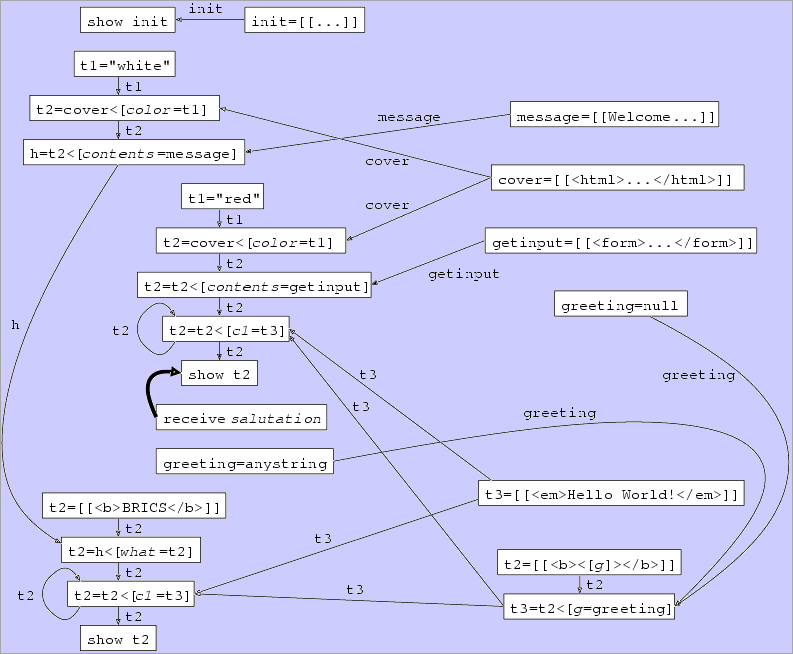
Anders Møller and Michael Schwartzbach, February 2006

|
NOTE:
These slides have not been updated since 2003. They have been superseded by the book
Anders Møller and Michael Schwartzbach, February 2006 |
|
| INTERACTIVE WEB SERVICES WITH JAVA |
|

The three checks guarantee that:
import dk.brics.jwig.runtime.*;
public class Greetings extends Service {
String greeting = null;
public class Welcome extends Session {
XML cover = [[ <html>
<head><title>Welcome</title></head>
<body bgcolor=[color]>
<{ if (greeting==null)
return [[ <em>Hello World!</em> ]];
else
return [[ <b><[g]></b> ]] <[g=greeting];
}>
<[contents]>
</body>
</html> ]];
XML getinput = [[ <form>Enter today's greeting:
<input type="text" name="salutation"/>
<input type="submit"/>
</form> ]];
XML message = [[ Welcome to <[what]>. ]];
public void main() {
XML h = cover<[color="white",contents=message];
if (greeting==null) {
show cover<[color="red",contents=getinput];
greeting = receive salutation;
}
exit h<[what=[[<b>BRICS</b>]]];
}
}
}
|
the analyzer goes through eight phases:

The possible documents being shown at the exit statement are then approximated by a summary graph:

No errors are found, in this case.
The key idea is the notion of summary graphs: a summary graph approximates the set of XML templates that may appear at a given program point for a given variable or expression.
|
| COPYRIGHT © 2002-2003 ANDERS MØLLER & MICHAEL I. SCHWARTZBACH |
|